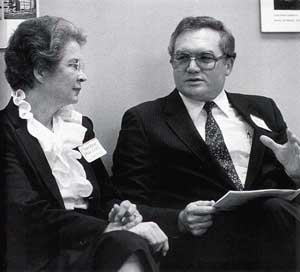On January 26, 1983, Group Health Cooperative's Board of Trustees creates the Center for Health Studies. The center formalizes Group Health's internal research activities, which track outcomes of specific medical protocols with the goal of establishing an evidence-based medical care. In 2009 the center will change its name to the Group Health Research Institute.
The Center for Health Studies was one of the many innovations pushed by Group Health's new President and CEO, Gail Warden. Warden came to Group Health in April 1981, after heading Chicago's vast Rush-Presbyterian-St. Luke's Medical System, and after directing the American Hospital Association.
Group Health's previous research efforts had been conducted by Dr. Robert Thompson, director of preventive care research for the medical staff. Dr. Thompson had been the only staff member funded by his colleagues to do research. Warden praised the efforts of Dr. Thompson, but wanted to give future studies a stronger mandate. He felt that research was being treated as a "back room kind of thing, and I thought that their activity ought to be given more visibility" (Crowley, 177).
Dr. Thompson later explained that the research department had previously coordinated external investigators, "but now we were going to develop our own internal research capabilities." Medicine, he added, "is a pretty imprecise practice," but by tracking results and doing other research, the best practices could be discovered and followed.
The Center for Health Studies' first director was Dr. Ed Wagner. In 2009 the center changed its name to the Group Health Research Institute, was receiving about $35 million in grants, and had conducted studies and catalyzed improved practices in care of patients with breast cancer, asthma, depression, hypertension, and in many other areas.

